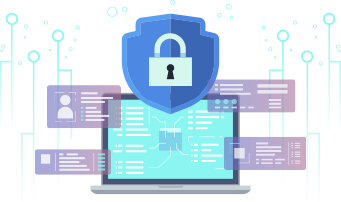How XDR Can Revolutionise MSP Cybersecurity

Your customers presumably do not inquire about how various technologies use heuristics to detect polymorphic threats. They are only interested in your response time in the event of a cyber attack. We are thrilled to announce that GravityZone XDR is now a part of our MSP offering. The goal of managed service providers is to provide customers with low-cost solutions that offer effective cyber protection against intrusions. However, the task of monitoring potential security breaches is becoming increasingly difficult due to a lack of security expertise and an expanding attack surface area resulting from the accelerated adoption of remote work, cloud services, and IoT devices.
XDR promises to address the difficulties associated with protecting heterogeneous environments more efficiently and with less expertise. Due to the recent emergence of the solution category, however, few comprehend the actual capabilities and benefits to which they can look forward, with some vendors misusing the acronym to capitalise on the interest.Extended Detection and Response (XDR) is the logical progression of Endpoint Detection and Response (EDAR). Its capabilities extend beyond endpoint security to include other infrastructure components, such as the network, cloud services, and email. It collects data from sensors across the enterprise and correlates and analyses it to provide unified and prioritised incidents.
To understand the value of XDR, consider the following scenario: an initial attack targets a personal PC, and the attacker uses Office 365 to compromise office PCs, before moving laterally to compromise other endpoints and file servers, deploying ransomware, and exfiltrating sensitive data. Without XDR, even the most skilled security analyst would require multiple hours to investigate incidents on each endpoint. Email, cloud, and network security may be examined by the same or distinct analysts. After many hours investigating siloed information, additional hours would be required to correlate the information across environments, possibly using manual queries of their Security Information and Event Management (SIEM) tool, in order to determine the root cause and impact. Then, they would need to utilise a variety of instruments to contain and eliminate the attack.
With XDR, information across the entire enterprise is automatically correlated, and a consolidated view of the potential assault is presented, indicating where the attack originated and how it is spreading. Simultaneously, additional investigation and rapid response options are available to quickly contain the attack. This results in quicker and more effective detection and response, as it eliminates the need for manual investigation and correlation of information across multiple tools. Will XDR replace SIEM and SOAR, and is it the only option for MSPs to increase customer protection and profitability simultaneously? Most likely, the answer to all of these queries is no. SIEM tools will continue to be used by more sophisticated teams and may be used more to support compliance regulations, while some MSPs that don't focus on security will find greater value in XDR through a Managed Detection and Response service from an MDR vendor.
Here are some features you should anticipate from a genuine XDR solution:
Having demonstrated superior detection and precision, highly effective prevention should block the majority of attacks. Ability to detect attacks out of the box; no additional integrations, detection protocols, or third-party solution required. The ability to autonomously correlate information across sources, as opposed to merely integrating with other tools and manually querying them.
You should not be required to incorporate separate workflows or SOAR tools, unlike when utilising open XDR tools. Comprehensive context surrounding attacks: analytics must answer all the concerns an analyst may have regarding what occurred, how it began, why it occurred, how it spread, and how to respond. MSP-specific integrations, a multi-tenant console, and usage-based licencing facilitate service provider routine duties.